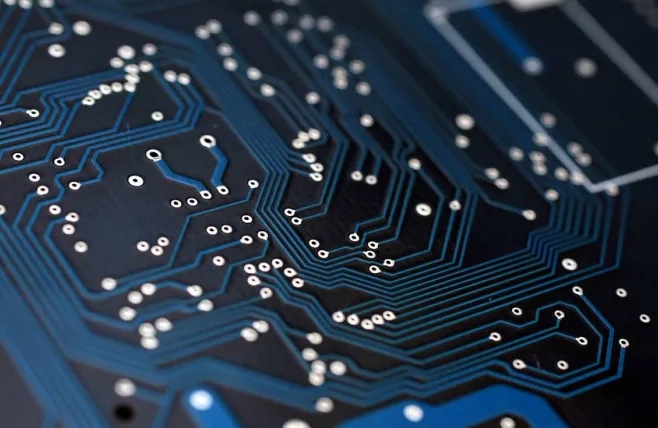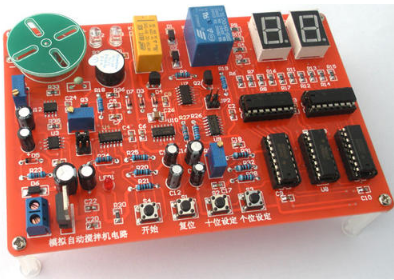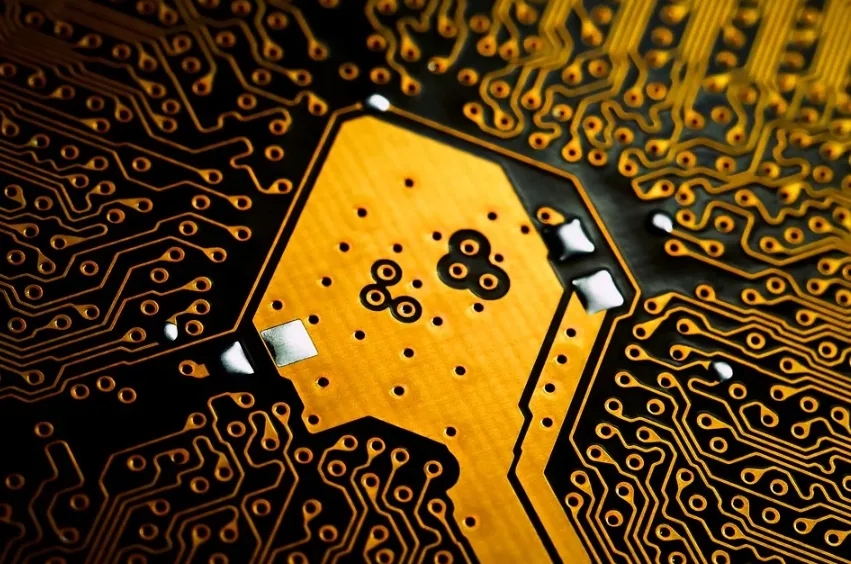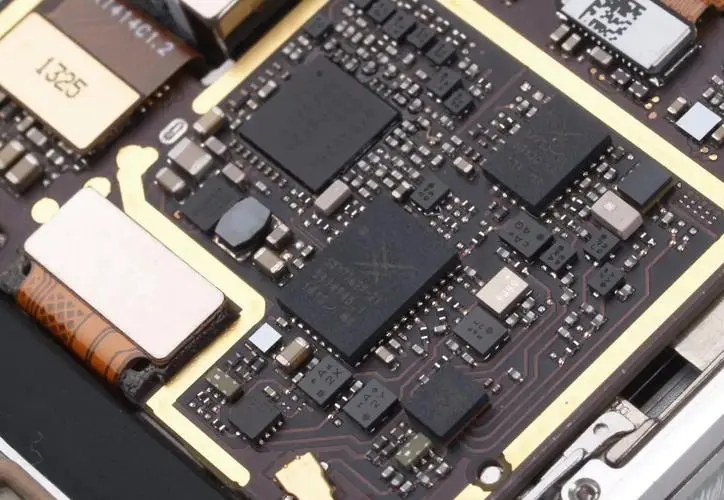

Very useful PCB experience design knowLEDge sharing
1. The four layers of boards from top to bottom are: signal plane layer, ground layer, power supply layer and signal plane layer;
The six layers of boards from top to bottom are: signal plane layer, ground, signal inner electrIC layer, signal inner electric layer, power supply, signal plane layer. For boards above 6 layers (the advantage is: interference radiation prevention), the inner electric layer is preferred. If the inner electric layer cannot meet the design requirements, the plane layer is preferred. It is forbidden to route wires from the stratum or the power layer (reason: it will split the power layer and produce parasitic effects).
2. If FPGA devices are required in the designed PCB, you must use the Quartus II software to verify the pin assignment before drawing the schematic diagram. (Some special pins in FPGA cannot be used as ordinary IO).
3. Cabling of multi power supply system:
For example, if FPGA+DSP System is used as a 6-layer board, there will be at least 3.3V+1.2V+1.8V+5V.
3.3V is generally the main power supply, which is directly laid on the power layer, and the global power network can be easily laid through the via;
5V may be power input generally, and only a SMAll area needs to be paved with copper. And try to be as thick as possible.
1.2V and 1.8V are core power supplies (it will be very difficult to face BGA devices if wiring is used directly). In the layout, try to separate 1.2V from 1.8V, and let the components connected within 1.2V or 1.8V be arranged in a compact area, and connect them with copper sheets, as shown in the figure:
In a word, because the power network covers the entire PCB, if the wiring method is used, it will be very complicated and will go far around. The method of copper covering is a good choice!
4. The routing between adjacent layers of the multilayer board adopts the cross mode, so as to reduce the electromagnetic interference between parallel wires and facilitate the routing.
5. If analog circuit and digital circuit need to be isolated, how to use isolation method? During layout, separate the devices used for analog signals from those used for digital signals, and then cut across the middle of AD chips! The analog signal is laid on the analog ground, and the analog ground/analog power supply and digital power supply are connected through a single point of inductance/magnetic bead.
6. PCB design based on PCB design software can also be seen as a software development process. Software engineering focuses on the idea of "iterative development" to reduce the probability of PCB errors.
(1) Check the schematic diagram, especially pay attention to the power supply and ground of the device (the power supply and ground are the blood of the system, and no negligence is allowed);
(2) PCB packaging drawing (confirm whether the pins in the schematic diagram are wrong);
(3) After PCB package sizes are confirmed one by one, add verification labels to the design package library;
(4) Import the net list, and adjust the signal sequence in the schematic diagram while layout (after layout, the automatic numbering function of OrCAD components can no longer be used);
(5) Manual wiring (check the power supply and ground network while laying. As mentioned earlier, the power supply network uses copper laying, so less wiring is used);
In a word, the guiding ideology in PCB design is to feed back and correct the schematic diagram while drawing the package layout (considering the correctness of signal connection and the convenience of signal routing).
7. The crystal oscillator shall be as close to the chip as possible, and the wiring under the crystal oscillator shall be avoided as much as possible, and the network copper skin shall be paved. The clock used in many places is wired in a tree clock tree mode.

8. The arrangement of the signal on the connector has a great impact on the difficulty of wiring, so it is necessary to adjust the signal on the schematic diagram while wiring (but never re number the components).
9. Multi board connector design:
(1) Use flat cable connection: the upper and lower interfaces are consistent;
(2) Straight socket: the upper and lower interfaces are mirrored symmetrically, as shown below:
10. Design of module connection signal:
(1) If two modules are placed on the same side of the PCB, the discipline serial number is larger than the small one (mirror connection signal);
(2) If two modules are placed on different sides of PCB, the number of discipline is from small to large.
In this way, signals can be placed to cross as shown in the right figure above. Of course, the above method is not a rule. I always say that everything changes as needed (this can only be understood by yourself), but in many cases it is very useful to design in this way.
11. Design of power and ground circuit:
Through improvement - the power supply and ground wire are close to the wiring, the loop area and electromagnetic interference are reduced (679/12.8, about 54 times). Therefore, the power supply and ground should be as close to the wiring as possible! The parallel routing between signal lines should be avoided as far as possible to reduce mutual inductance between signals.
12. Choose a good grounding point: the grounding point is often the most important
How many engineers and technicians have discussed the small grounding point? This shows its importance. In general, common grounding is required, for example, multiple ground wires of the forward amplifier shall be connected to the trunk ground after being converged. In reality, it is difficult to do it completely due to various restrictions, but we should try our best to follow them. This problem is quite flexible in practice. Everyone has his own set of solutions. It is easy to understand if he can explain it to specific circuit boards.
13. There should be a reasonable trend
Such as input/output, AC/DC, strong/weak signal, high frequency/low frequency, high voltage/low voltage, etc. Their strike should be linear (or separate), and should not blend with each other. Its purpose is to prevent mutual interference. The best trend is straight line, but it is generally not easy to achieve. The most unfavorable trend is circular. Fortunately, isolation can be set to improve. The requirements for DC, small signal and low-voltage PCB design can be lower. So "reasonable" is relative.
14. Reasonably arrange power filter/decoupling capacitor
Generally, only a few power supply filter/decoupling capacitors are drawn in the schematic diagram, but they are not indicated where they should be connected. In fact, these capacitors are set for switching devices (gate circuits) or other components requiring filtering/decoupling. These capacitors should be arranged as close to these components as possible, and will not work if they are too far away. Interestingly, when the power filter/decoupling capacitor is arranged properly, the problem of grounding point is less obvious.
15. The line diameter is required, and the size of the embedded through hole is appropriate
The line that can be made wide shall never be made thin; High voltage and high frequency lines shall be round and smooth without sharp chamfers, and right angles shall not be used when turning. The ground wire should be as wide as possible, and it is better to use a large area of copper coating, which can greatly improve the docking point problem. The size of the pad or wire hole is too small, or the pad size and the drilling size are not matched properly. The former is disadvantageous to manual drilling, while the latter is disadvantageous to numerical control drilling. It is easy to drill the pad into "c" shape, or drill off the pad if it is heavy. The wire is too thin, and the large area of non wiring area is not set with copper coating, which is easy to cause uneven corrosion. That is, after the corrosion of the unrouted area, the thin wire is likely to be excessively corroded, or seEMIngly broken, or completely broken. Therefore, the function of copper coating is not only to increase the ground wire area and anti-interference.
16. Number of vias Solder joints and linear density
Some problems are not easy to be found in the early stage of circuit production, and they often emerge in the later stage. For example, there are too many wire holes, and a little carelessness in the copper sinking process will lead to hidden dangers. Therefore, wire holes shall be minimized in the design. The density of parallel lines in the same direction is too large, and it is easy to connect into one piece during welding. Therefore, the linear density shall be determined according to the level of welding process. The distance between welding points is too small, which is not conducive to manual welding. The welding quality can only be solved by reducing work efficiency. Otherwise, hidden dangers will be left. Therefore, quality and work efficiency of the welding personnel should be comprehensively considered when determining minimum distance of the welding spot.
If you can fully understand and master the above PCB design considerations, you can greatly improve the design efficiency and product quality. Correcting the existing errors during production will save a lot of time and cost, as well as rework time and material input.
PCB manufacturers, PCB designers and PCBA manufacturers will share useful PCB experience and design knowledge.
然后
聯(lián)系
電話(huà)熱線(xiàn)
13410863085Q Q

微信

- 郵箱










